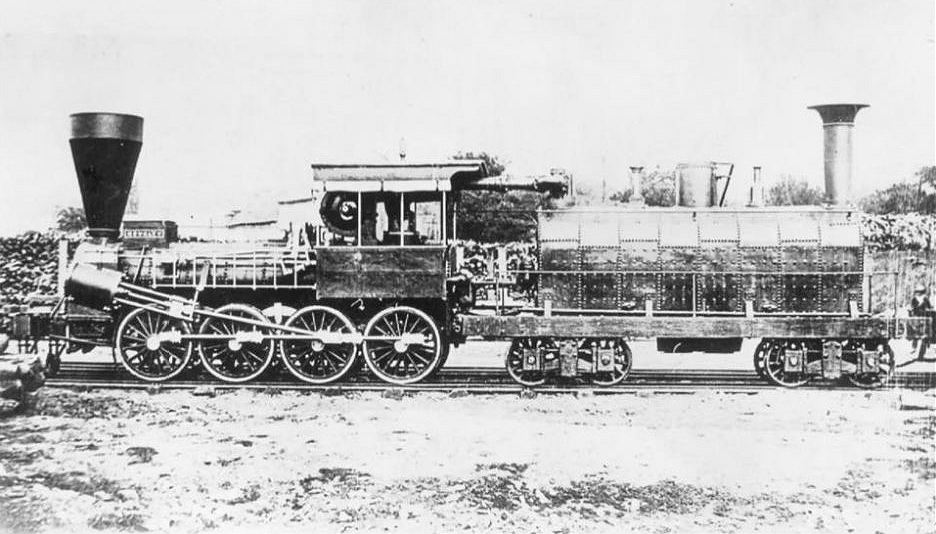Gallery opened: 6 Sept 2016
Updated 8 Sept 2017




The Nichols Boiler |
Gallery opened: 6 Sept 2016 |
In 1846 Mr G A Nichols was the chief engineer of the Philadelphia and Reading railroad. He was faced with the problem of burning anthracite, which was cheap and smokeless but required a very wide grate to burn effectively. Nichols concluded that it was impossible to fit a suitable wide grate onto the locomotive, because of the need for big driving wheels. He therefore placed a separate boiler on a trailer behind the locomotive, which was aptly called 'Novelty'. The working out of the details was done by a Mr Lewis Kirk.
You can probably see the biggest snag already- the weight of the boiler was not available for adhesion. The performance in this respect must have been terrible.
 | Left: The Nichols anthracite locomotive Novelty: 1846
|
The name 'Novelty' can just be seen on the side of the sandbox next to the front funnel. This is a large spark-collecting funnel, and one wonders why it was there. Presumably Novelty was a conversion from an existing conventional locomotive, and the original funnel was simply left in situ.
The locomotive cylinders are said to have exhausted into a condenser, though it is hard to see anything big enough for the job in the photograph. There is what looks like a cylindrical tank at the front of the cab (where it would surely have blocked the driver's vision) but I question if it could have condensed the entire steam exhaust of the locomotive. Blast was not used to create boiler draught (it couldn't be if the steam was condensed) so a steam driven fan was used to supply positive pressure to the firebox. This unfortunately meant that the fire could not be fed without stopping the draught fan; otherwise you'd have flames billowing out of the firebox, which would deter the most enthusiastic of firemen.
According to Angus Sinclair in his 'Development of the Locomtive Engine' pub 1907:
"The boiler was of the return tubular form and had a large fire box with 36 square feet of grate area. The total heating surface was 1,085 square feet. The engine was a failure principally for want of the necessary adhesion, but the boiler details were badly worked out, for the fire could not be replenished while the draft fan was working, and it was necessary to stop to fire between stations. There have been few such glaring mistakes made in locomotive designing. Although the Novelty was a failure it represented a most courageous attempt to reach a desired end."
What puzzles me here is the 'return tubular form' of the boiler, which implies that the firebox is at the rear end of the boiler near the rear chimney, when having it at the front of the boiler and the rear of the cab would have been much more convenient for communication, especially when proper co-ordination of draught fan and firedoor opening was a matter of life and death for the fireman. The answer is presumably that the coal was carried in a tender behind the boiler, and so the firebox had to be at the same end.
Sinclair says the design was patented, but no US patent has been discovered so far. Very little information seems to exist apart from that written by Sinclair. <--
 | Left: The boiler of Nichols' 'Novelty': 1846
|

  
|